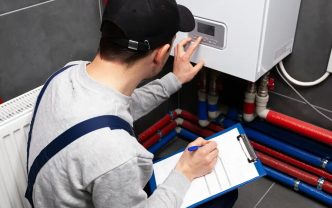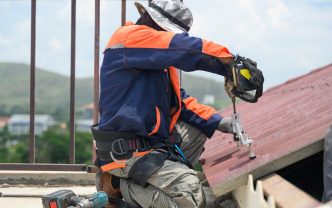The Quiet Workhorse That Deserves Attention
The unsung hero of winter is a heating oil tank, frequently hidden in a basement corner or outside. It works smoothly until age, rust, and time catch up. Upgrading an outdated tank isn’t just basic maintenance; it stabilises your heating system and protects your home and family.
Where Old Tanks Go Wrong
Time is tough on steel. Even well-cared-for tanks develop corrosion, especially around legs, seams, and the bottom where condensation settles. What begins as harmless surface rust can morph into pitting and pinholes that let oil creep out slowly, or worse, fail suddenly. Leaks are more than a nuisance: oil can seep into soil, taint groundwater, and infiltrate the home with fumes—problems that are costly, stressful, and avoidable with a preemptive replacement.
Modern Tanks, Modern Protections
Today’s tanks are engineered with safety baked in. Double-walled models, corrosion-resistant coatings, and high-grade alloys create robust barriers that keep fuel contained for decades. Many come with integrated leak-detection interstitial spaces, upgraded fill and vent components, and smarter fittings that hold tight under pressure and fluctuating temperatures. The result: fewer surprises during deep winter, steadier performance, and a heating system that feels reliably locked-in.
Breathing Easier Indoors
When tanks age, they can emit lingering odors that ride the air and cling to fabrics. A faint oil smell is often a flare from an underlying issue—breaches in seals, minor leaks, or improper venting. A fresh, properly sealed tank restores the quiet, neutral baseline your home should have, safeguarding comfort and reducing the chance of irritation for kids, pets, and anyone sensitive to odors.
Built-In Fire Precautions
Heating oil is stable and less volatile than gasoline, but neglect can raise fire risk at the weakest points: corroded walls, brittle lines, loose fittings, or compromised valves. Modern replacements introduce sturdier connections, better shutoffs, and components designed to handle thermal expansion and vibration without loosening. With a sound tank and tight system, the fire risk curve bends in your favor.
The Environmental Ripple Effect
Clean tanks safeguard outside the basement. Slow leaks can spread through soil and groundwater, turning a service call into a neighbourhood issue. Modern tanks avoid pollution at the source and eliminate the environmental roller coaster—no excavation, soil remediation, or long-term liability.
Clear Signs It’s Time to Upgrade
Not every tank fails loudly. Many whisper their way into trouble. Watch for:
- Age: typically 15–25 years signals time to plan a replacement.
- Visible rust, flaking paint, blistered coating, or dampness on the tank surface.
- Stains or wet spots beneath the tank or along piping and fittings.
- Unexplained spikes in fuel usage or deliveries that don’t match your thermostat settings.
- Noises, sputtering, or intermittent burner performance tied to fuel supply issues.
- For outdoor or underground tanks: frost heaving, shifting supports, or disturbed soil.
These clues give you a window to schedule a calm, planned swap instead of racing through a mid-winter emergency.
Why Installation Skill Matters
A great tank can only do so much if the install is mediocre. A professional replacement includes tank sizing for your home, code-compliant placement, secure base supports, clean fuel-line routing, proper venting, and a full leak/pressure test before the system comes online. Pros also handle decommissioning of the old tank and safe disposal, which avoids headaches with inspections and haul-away rules.
The Comfort of Long-Range Reliability
A new tank is peace of mind in steel and coatings. With optimized design and materials, it delivers a long service life, fewer service calls, and steadier fuel delivery to the burner—no mystery drawdowns or air in the lines. That predictability is a gift during the coldest snap, when heat simply needs to work.
The Cost of Waiting vs. Acting Early
Waiting for failure is the expensive path. Emergency replacements come at premium prices and poor timing, and any leak cleanup piles on costs you never planned for. Planning your upgrade on your schedule—before trouble strikes—puts you in control of budget, model, and installation timing, and protects property value at the same time.














